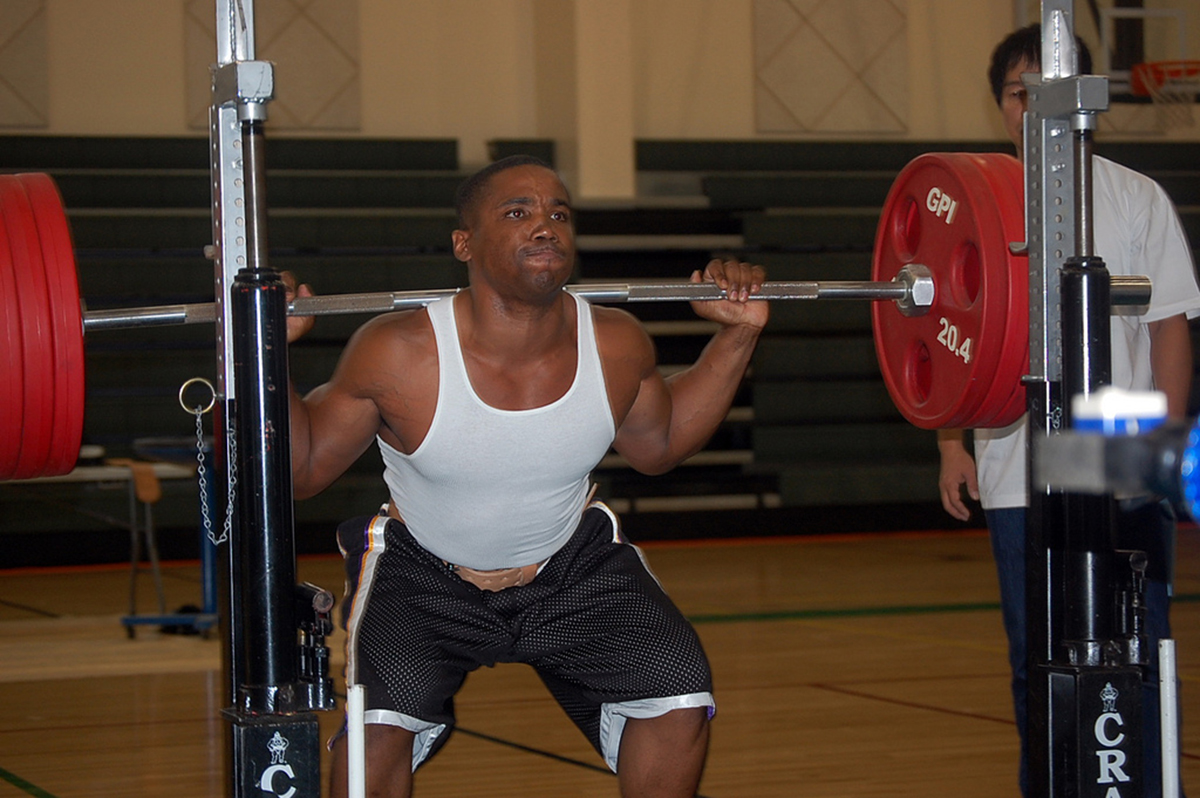Table of Contents
So you bench press more than anyone else in your gym? Maybe your squat rivals guys 20 or 30 pounds heavier than you, and you can easily pull a triple bodyweight deadlift? If so, perhaps it's time to stop just claiming these feats of strength in a gym environment and step up onto the bigger stage by entering a powerlifting contest.

Even if you're not quite at these levels of strength however, there's nothing to stop you from hitting the powerlifting scene. The great thing about powerlifting is that it's a completely inclusive, non-judgmental sport.
Despite the fact that the notion of a powerlifting meet might conjure up images of huge behemoths of men, or women so beefy they scare the living daylights out of you, this is far from the case. Powerlifting, especially at the beginner and local levels, draws people from every background and every ability level. At most meets, you'll find competitors from the ages of 13 or 14, right up to men and women competing in masters categories of 60 or 70 years old. Men and women alike take to the platform to perform the squat, bench press and deadlift, and the competition is entirely amicable. While you will be watched by judges and ranked against other competitors, the only real competition you have is yourself.
So that's that cleared up, what can you expect at your first powerlifting meet, and what do you need to do beforehand?
How to start
For those new to the discipline, starting with a solid foundation is crucial both to prevent potential injuries and to ensure maximum progress. It's essential to prioritize form over weight. A correct technique is vital in powerlifting, as it helps avoid injuries and ensures the efficient use of strength. It might be beneficial to engage with a certified coach or personal trainer familiar with powerlifting to get started.
Beginners should approach powerlifting with patience, starting with lighter weights and focusing on perfecting form before moving to heavier lifts. Adopting a consistent training program tailored for novices is also key. Such a program ensures balanced muscle development and provides a structured path for progression.
Furthermore, it's important to incorporate the principle of progressive overload by gradually increasing weight or repetitions over time. Before delving into the core of the training, spend 10-15 minutes warming up through dynamic stretches and light cardiovascular exercises. This not only prepares the muscles and joints for the strains of heavy lifting but also minimizes injury risks.
Recovery should never be underestimated. Muscles grow during rest, so allowing sufficient time between sessions and getting 7-9 hours of sleep nightly is crucial. Techniques like stretching and foam rolling can also aid recovery.
Nutritionally, a balanced diet rich in protein, healthy fats, and carbohydrates is essential for fueling workouts and recovery.
When you are ready, go and watch a local meet to get a feel of how the day will run, and the general atmosphere among competitors and spectators. This will let you know whether you’re ready to compete yet.
From here, moving from the gym to a competition is as easy a one, two, three. (Plus a few more steps.)
Perfect your form
You might be able to get away with half reps in the gym, where no one questions your form, but at a meet there'll be three different judges watching every lift you do. (You’ll lift nine times in total – three squats, three bench presses and three deadlifts.
For your lift to count, you must execute it perfectly. That means your squats must go below parallel (the point where your hamstrings are in line with the ground,) bench presses must be paused on your chest until the judge calls for you to press the bar back up, and your deadlift must be one smooth motion without any hitching or downward movement.
Learn the calls
On each lift, you'll have to listen to the calls from the head judge. Even if you perform the lift properly, not adhering to the calls will be classed as a failed attempt.
On squats you'll be given calls of "squat" and "rack" indicating when you can start the lift and when the judge is happy for you to re-rack the bar.
For bench, you'll be given calls of "start," "press," and "rack."
On the deadlift, it’s "start" and "down."
Get the right routine
There’s more on this later in the article.
See Also: Power Cleans For Strength And Fitness - Get Improved Conditioning And Real Strength
Be prepared for the day
In your kit bag, you’ll need:
- A singlet/wrestling suit
- Knee-length socks (required for the deadlift)
- Chalk
- Baby powder (to stop the bar scraping your thighs on the deadlift)
- A weight belt (if you use one)
- Wrist wraps (as above)
- Lifting shoes (Generally flat-soled pump-like shoes or special squat shoes are recommended.)
- A plain t-shirt
- Enough food and fluids to get you through the whole day, as contests can last up to 10 hours.
- “The Beginner’s Guide to Powerlifting”, By Jim Wendler
- www.mensfitness.com/training/beginners-guide-powerlifting
- Photo courtesy of USAG- Humphreys by Flickr : www.flickr.com/photos/usaghumphreys/5082080561/
- Photo courtesy of Jason Lengstorf by Flickr : www.flickr.com/photos/ennuidesign/2715835968/


Your thoughts on this